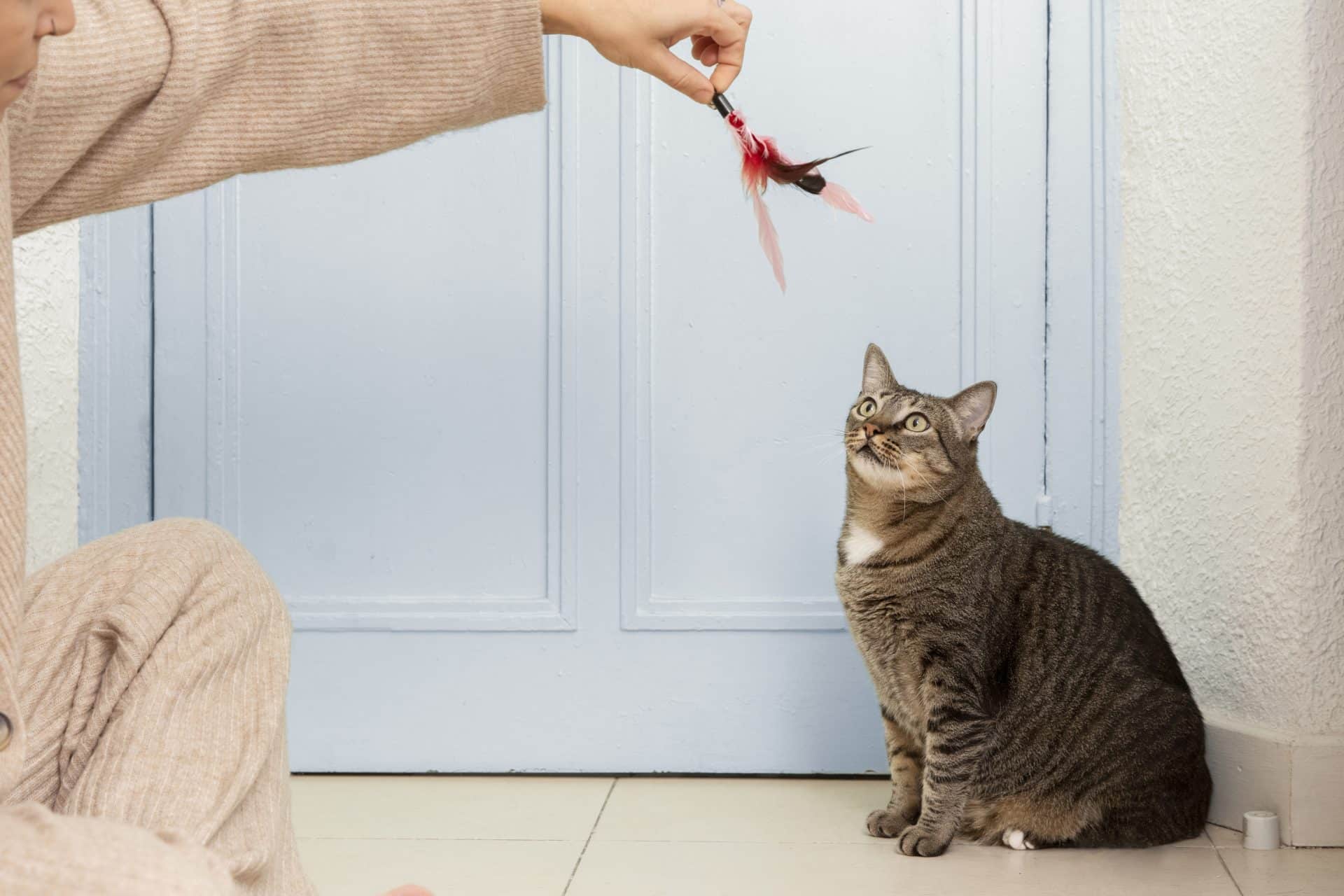Cats are valued pets, recognized for their independence, grace, and charm. However, even the most affectionate feline can develop certain behavioral challenges that may puzzle or frustrate their human companions. Cat behavior problems are common in households with cats, and understanding these issues is essential for maintaining a harmonious home.
In this comprehensive guide, we’ll explore the most frequent cat behavior problems, what causes them, how to manage and resolve them, and how to prevent future occurrences. Whether you’re a new cat owner or a seasoned feline enthusiast, this article will equip you with the knowledge to handle cat behavior problems effectively and compassionately.
What Are Cat Behavior Problems?
Cat behavior problems refer to undesirable or disruptive behaviors displayed by domestic cats that affect their well-being or interfere with the household. These issues can range from aggression and inappropriate urination to destructive scratching and excessive vocalization.
Behavior problems are not necessarily signs of a bad cat; they often indicate stress, medical conditions, environmental issues, or unmet needs. Recognizing and addressing these behaviors early is crucial to ensuring your cat remains happy and healthy.
Common Cat Behavior Problems and Their Causes
Let’s dive into the most common cat behavior problems and what typically causes them.
1. Inappropriate Elimination (Litter Box Issues)
This is one of the most reported cat behavior problems. A cat may urinate or defecate outside the litter box due to:
- Dirty litter boxes
- Stress or anxiety
- Urinary tract infections
- Territorial marking
- A dislike for the type of litter used
Cats are clean creatures. If their litter box isn’t up to their standards, they may refuse to use it. Medical issues should always be ruled out first by a veterinarian.
2. Aggression Toward People or Other Pets
Aggression is one of the more dangerous cat behavior problems, especially when directed at humans or other animals. Types of feline aggression include:
- Fear-based aggression
- Redirected aggression
- Territorial aggression
- Play aggression
- Pain-induced aggression
Causes vary, but they can stem from a lack of socialization, past trauma, or medical conditions such as arthritis.
3. Excessive Meowing or Yowling
Vocalization is a way for cats to communicate. However, excessive meowing can become one of the most annoying cat behavior problems. This behavior may be linked to:
- Hunger or boredom
- Attention-seeking
- Cognitive dysfunction in older cats
- Pain or illness
- Breeds like Siamese, which are naturally more vocal
Identifying the reason behind the vocalization is key to managing this issue.
4. Scratching Furniture and Destructive Clawing
Scratching is a natural behavior, not one of the most annoying cat behavior issues. Cats scratch to mark territory, stretch their muscles, and shed old claw sheaths. However, it becomes a problem when they destroy furniture, carpets, or walls.
If cats don’t have suitable scratching outlets, they’ll find alternatives. Training, providing scratch posts, and using deterrents can help.
5. Spraying
Spraying is a specific type of urination used for marking territory. Both male and female cats may spray, especially if they’re unneutered. It’s one of the most distressing cat behavior problems for cat owners due to the strong odor and hygiene concerns.
Neutering, reducing stress, and using enzymatic cleaners can help manage spraying.
6. Obsessive Grooming or Licking
Cats are fastidious groomers, but overgrooming can indicate stress, allergies, or parasitic infections. This becomes one of the more subtle yet serious cat behavior problems when it leads to bald spots or skin infections.
7. Nighttime Activity and Zoomies
Some cats, however, exhibit nighttime zoomies, disrupting their owner’s sleep. This can be counted among mild yet frustrating cat behavior problems.
Structured playtime during the day and establishing routines can help regulate your cat’s internal clock.
8. Fear and Hiding
A shy or fearful cat that hides excessively may be experiencing anxiety, poor socialization, or fear from past trauma. This can escalate into avoidance or aggression if not addressed. Cat behavior problems like fear-based hiding require a slow and gentle approach to gain the cat’s trust.

Diagnosing Cat Behavior Problems
Understanding the underlying reasons of cat behavior problems is the first step toward resolving them.
A comprehensive approach includes:
- Veterinary Examination: Rule out medical issues that might cause behavioral changes. For instance, urinating outside the litter box could stem from a urinary tract infection or kidney problem.
- Environmental Assessment: Evaluate your home from your cat’s perspective. Is there enough space? Are there stressors like loud noises, unfamiliar animals, or changes in routine?
- Observation: Monitor when and where the behavior occurs. Does it happen at certain times? Are specific triggers present?
Keeping a behavior journal can help track patterns and provide insights for your vet or a feline behaviorist.
Solutions to Cat Behavior Problems
Each behavioral issue has its own set of solutions. Let’s explore how to address some of the most common cat behavior problems effectively.
1. Litter Box Solutions
- Clean the litter box daily
- Use unscented, fine-textured litter
- Provide one box per cat plus one extra
- Keep boxes in quiet, low-traffic areas
- Avoid covered boxes if your cat dislikes them
2. Managing Excessive Meowing
- Feed on a consistent schedule
- Avoid responding to attention-seeking meows
- Provide stimulation like toys and window perches
- Address any medical causes of vocalization
3. Preventing Destructive Scratching
- Offer multiple scratching posts (vertical and horizontal)
- Use catnip to lure your cat to scratching surfaces.
- Discourage furniture scratching with double-sided tape
- Trim your cat’s nails regularly
4. Calming Nighttime Activity
- Schedule interactive play sessions before bedtime
- Before you go to bed, feed your cat a tiny food.
- Provide nighttime enrichment like toys or puzzle feeders
5. Helping Fearful Cats
- Create safe zones with hiding places
- Avoid forcing interactions
- Use positive reinforcement to build confidence
- Be patient—trust takes time

Preventing Future Cat Behavior Problems
Preventing cat behavior problems is easier than fixing them. Here’s how you can create a cat-friendly environment that nurtures good behavior:
- Socialize kittens early: Expose them gently to various people, sounds, and experiences.
- Enrich their environment: Boredom leads to many cat behavior problems. Use climbing shelves, toys, and interactive feeders.
- Routine matters: Cats thrive on predictable schedules for feeding, playing, and sleeping.
- Respect their nature: Understand that cats need personal space and mental stimulation.
- Monitor health regularly: Yearly vet checkups can detect early signs of medical issues that might trigger behavior problems.
When to Consult a Professional
If you’ve tried multiple strategies and your cat’s behavior doesn’t improve—or worsens—it’s time to seek professional help. Cat behavior problems that escalate can lead to rehoming or neglect if not properly managed.
A feline behaviorist or veterinary behaviorist can develop a personalized strategy to manage persistent behavioral concerns. They’ll work with you and your cat to implement gentle, science-backed interventions.
Myths About Cat Behavior Problems
There are several misconceptions about cat behavior problems that can prevent proper treatment:
- “My cat is just being spiteful.”
Cats don’t act out of revenge. Most behavioral issues stem from stress, illness, or unmet needs. - “Spraying means my cat hates me.” Spraying is a normal territorial behavior and not a personal attack.
- “He’ll grow out of it.”
Some kittens may outgrow certain behaviors, but adult cats need guidance and support. - “Punishment works.”
Negative reinforcement like yelling or hitting can damage trust and worsen behavior.
Understanding the truth behind these myths helps build a better relationship with your cat.
Conclusion
Cat behavior problems can be challenging, but they are not insurmountable. By understanding the causes, recognizing the signs, and using appropriate solutions, most behavior issues can be resolved or significantly reduced. Always begin with a trip to the vet to rule out medical issues, then address environmental and emotional factors. Every cat is unique, and their behavior is a form of communication. Rather than viewing these problems as disobedience, consider them signals that something needs attention—be it health, environment, or emotional well-being.
These information are gathered from different surveys, medical tests and tech giants like google, Wikipedia and more. Our top priority is to provide you valuable information.
For More Details About Different Pet Names Click Here




